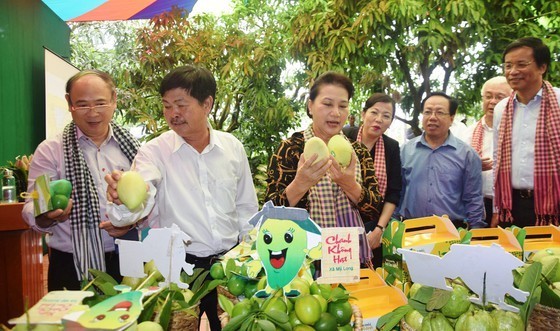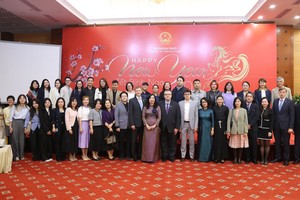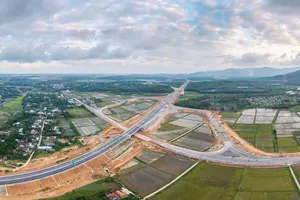In Vietnam, co-operatives have proven the most effective means of connection between farmers and production households, an inevitable trend in linking agricultural value chains.
Resolution No. 13/NQ-TW dated March 18, 2002 of the 9th session of the Central Committee of the Party marked an important milestone in the development of collective economy and the farmers’ co-op landscape in particular. The Law on Co-operatives in 2012 also marked a fundamental change in the position and role of new and modern cooperative models.
HCMC at the end of 2020 had 680 co-operatives for developing agricultural models, market management, environmental sanitation, and transportation.
They have also mechanized soil preparation, spraying and installed automatic spraying systems to reduce labor, production costs and increase profits for farmers.
In particular, Dong Thap province in 2016 established a rally more than 100 households working together on a produce label on a collective area of more than 113ha.
The rally then set up its own Agricultural Cooperatives to help local farmers distribute longan fruits, supply inputs, improve techniques, thus increase local revenue. The member households have earned multiple food and produce certifications as well as their own Production Unit Codes.
 National Assembly Chairwoman Nguyen Thi Kim Ngan visiting a successful mango co-operative in Dong Thap Province (Photo: SGGP)
National Assembly Chairwoman Nguyen Thi Kim Ngan visiting a successful mango co-operative in Dong Thap Province (Photo: SGGP)
As of 2019, the number of successful co-operatives accounts for about 55 percent of farmers’ co-ops, and 50-80 percent of nonagricultural co-ops, according to the Steering Committee for Cooperative Economy Innovation and Development.
61 out of the 63 localities in the country up to now have submitted projects on cooperative economy innovation, and 42 among which have specific policies for the area.
For instance, more than 60,000ha of farmland or 20 percent of the total production area in Lam Dong Province have utilized advanced technology, generating from VND400 million to VND3 billion (about US$17,281 - $129,691) per hectare each year.
According to the Vietnam Cooperative Alliance, there are nearly 25,300 cooperatives in the whole country by the end of 2020, up 2,002 year-on-year, attracting 7.2 million members and 2.5 million long-term workers earning VND45 million (about US$1,947) per year on average.
Moreover, they have significantly improved management capacity, successfully attracted young workers, expanded value chain-based models of cooperative, and applied advanced technology.
21.5 percent of all co-operative groups and unions provide input and output services and distribute end products for their members, and 13 percent are a part of the members’ production chains.
Regardless of its achievements, the co-operative sector has not reached its full potential, with many not having a proper office or highly qualified staff. The direct benefits they bring to new members are also limited to supplying input materials.
Co-operatives should not only serve as a middleman for members but also offer services like preserving, preliminary processing, processing of produce to both generate income and improve social welfare for farmers, said Deputy Minister of Agriculture and Rural Development Le Minh Hoan.
























